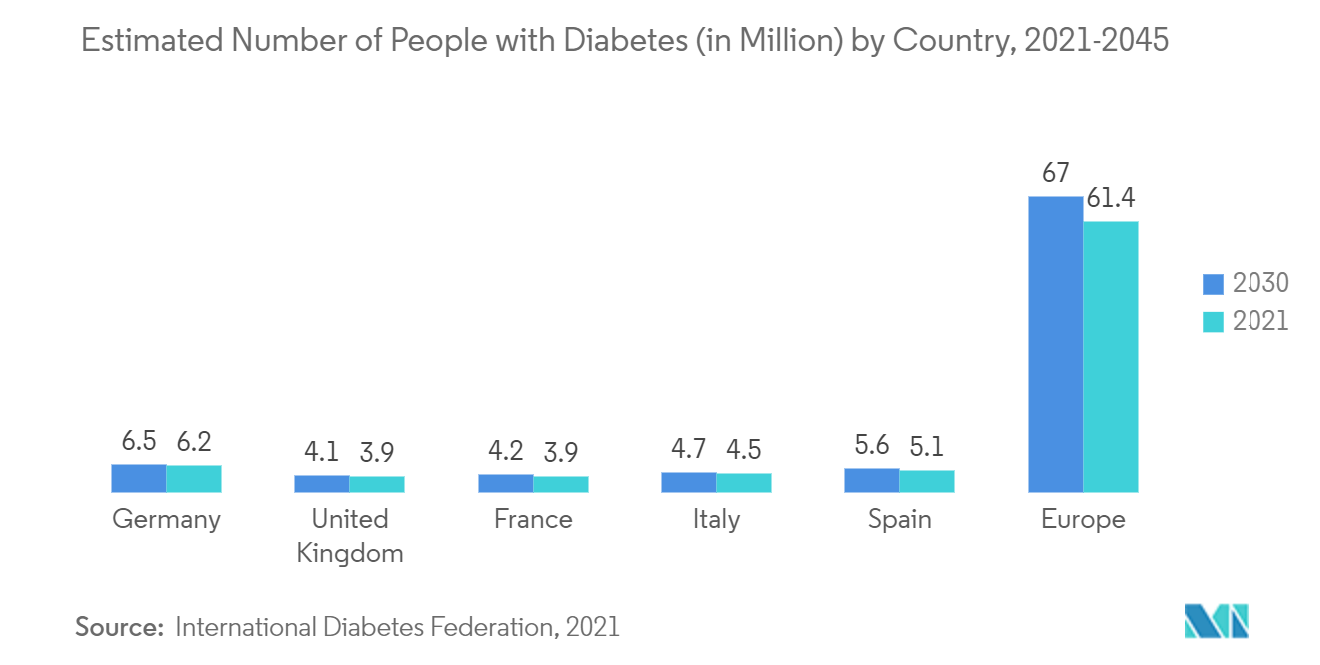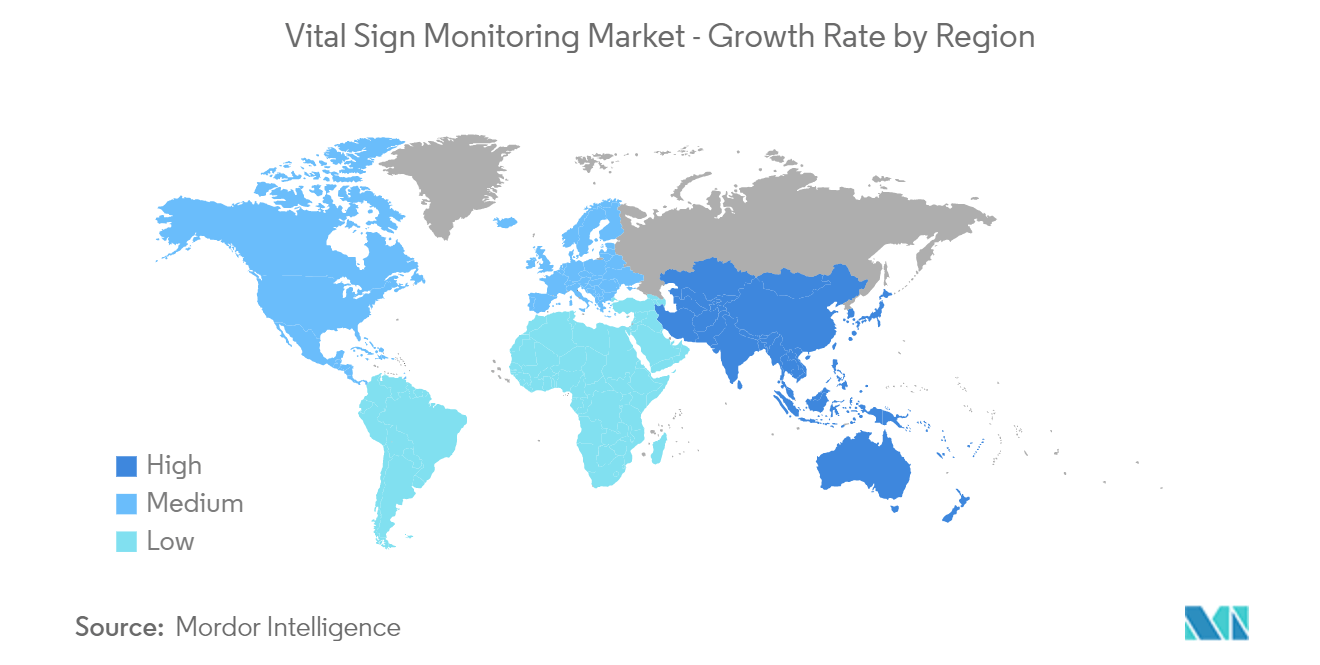Market Trends of Global Vital Sign Monitoring Industry
This section covers the major market trends shaping the Vital Sign Monitoring Market according to our research experts:
Hospitals and Clinics Segment is Expected to Hold a Significant Share in the Market Over the Forecast Period
Vital sign monitors have been conventional in hospitals and clinics and play an essential role in indicating a patient's clinical conditions. Monitoring blood pressure, pulse, and respiration rates are crucial to hospital patient care. In hospitals, nursing assistants or technicians were responsible for collecting patients' vital signs on a scheduled basis at a periodic interval, which used to have errors. The vital sign monitors thus minimize the chances of errors, which results in safer patient care. Hence, hospitals generate more demand as patients and providers can adopt vital sign monitors for ease of monitoring. Thus, it results in a higher share of hospitals in the end-user segment.
Moreover, with the rise in IoT-enabled consumer health wearables, the market will likely grow as the line between consumer health wearables and medical devices begins to blur. It is now possible for a single wearable device to monitor a range of medical risk factors. These devices can give patients direct access to personal analytics that can contribute to their health, facilitate preventive care, and aid in managing an ongoing illness. For instance, in May 2021, Essence SmartCare launched VitalOn, a comprehensive remote patient monitoring (RPM) platform for active seniors and older adults living with chronic conditions. The system is always on, providing continuous monitoring and chronic conditions management for a wide range of healthcare needs, both at home and on the go. It continually gathers and analyzes patient data from multiple health and monitoring devices to facilitate proactive, predictive, and preventative care. Thus, launching such devices is expected to drive the studied segment.
In December 2020, Konica Minolta launched a patient monitoring system in Japan for Covid-19 hospitalized patients with mild to moderate disease treated in isolation zones. This patient monitoring system enables spot checks of such patients' vital signs, measured by a pulse oximeter, a thermometer, and a blood-pressure monitor, as well as continuous monitoring data from the pulse oximeter, to be transmitted to the nurses' station, which is located outside the isolation zone, via a sub-GHz wireless network, allowing for collective data management at the station. The rising launch of such products amid pandemics and innovations in the products are expected to drive this segment's growth further. Therefore, owing to the above-mentioned factors, the segment is expected to drive this segment's growth.

North America Holds a Major Share and Expected to do Same in the Forecast Period
North America holds a significant share in the market, and it is expected to do the same over the forecast period. This region is expected to increase its market share, owing to the well-established healthcare industry and better reimbursement facilities. Moreover, the expanding base of the geriatric populace, developing interest for remote and wireless devices combined with streamlined coverage policies, and rising occurrences of interminable disorders drive the market growth in the region.
The United States holds most of the market in the North American region due to the higher adoption of digital healthcare in the country, rising investments made by companies in the region, and the rise in the prevalence of cardiovascular diseases, among others. For instance, According to the July 2022 update of the Centers for Disease Control and Prevention (CDC), approximately 805,000 heart attack incidences are recorded every year in the United States, of which 605,000 people had a heart attack the first time and the remaining 200,000 were those who already had a heart attack before. Further as per the same source, about 1 in 5 heart attacks are silent which means the person had a heart attack but was not aware of it. hence, due to the high burden of diseases, the demand for vital sign monitoring devices is expected to increase in the country, fueling growth in the studied market.
In addition, the rise in approvals and product launches in the United States is further expected to boost market growth over the forecast period. For instance, in August 2020, Stasis Labs announced the United States launch of their mobile-connected remote patient monitoring technology for hospital and outpatient use. The Stasis system comprises a smart device, traditional vital sign sensors, a bedside monitor, and a supporting cloud platform. Such launches will drive the market due to the adoption of these devices.
Moreover, in January 2022, Aktiia rolled out a plan to launch its automated 24/7 blood pressure monitor in the United States. The new device is designed to gather more than 100 times the blood pressure data of other monitors and provides ten times more engagement. Thus, the launch of technologically advanced blood pressure monitors will increase the efficiency of blood pressure monitoring, which is expected to further drive market growth in the country.
Therefore, the market is expected to drive in the North American region due to the above-mentioned factors.


